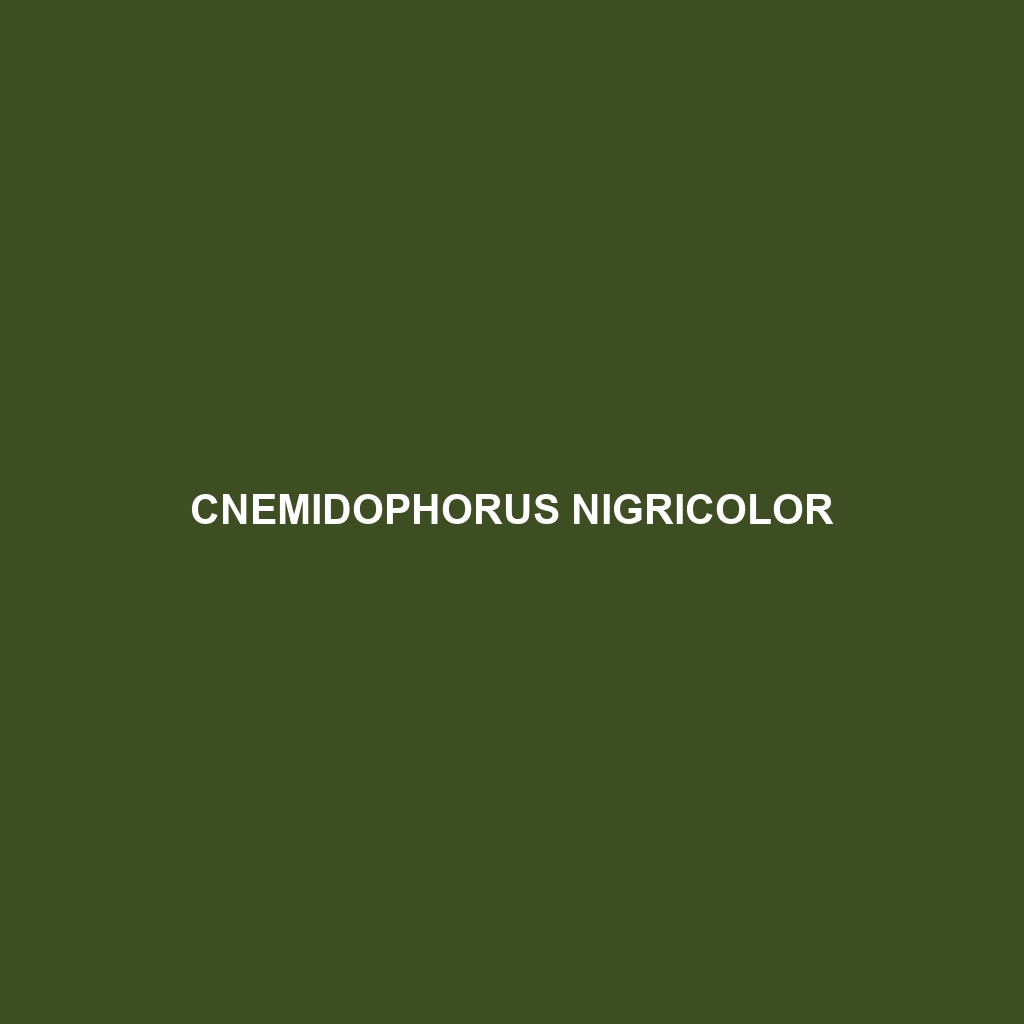Cnemidophorus nigricolor
Common Name: Cnemidophorus nigricolor
Scientific Name: Cnemidophorus nigricolor
Habitat
Cnemidophorus nigricolor, commonly known as the black-colored whiptail lizard, is primarily found in specific regions of Central America and parts of Mexico. This species thrives in arid, semi-desert environments, including scrublands and grasslands. Its populations are often located near sandy soil, where it can effectively burrow and find refuge from predators.
Physical Characteristics
The black-colored whiptail lizard typically measures between 15 to 20 centimeters in length. Its distinguishing feature is its dark, almost black coloration with lighter underbelly scales that aid in thermoregulation. Cnemidophorus nigricolor possesses a long, slender body, a pointed snout, and a long tail that can be twice as long as its body. These physical traits not only make it agile but also adept at escaping from potential threats.
Behavior
This lizard species exhibits unique behaviors well-suited for survival in its habitat. Cnemidophorus nigricolor is primarily diurnal, becoming most active during the warmer hours of the day. It is known for its quick movements, often darting into burrows or vegetation when disturbed. Additionally, these lizards display territorial behavior, especially among males during mating seasons.
Diet
Cnemidophorus nigricolor is an insectivorous species, feeding primarily on a diet of insects, spiders, and other small invertebrates. Its keen eyesight aids in spotting prey, while its agile body allows for quick captures. The availability of food sources in its natural habitat is crucial for its survival, particularly during the mating season when higher energy intake is necessary.
Reproduction
The reproductive habits of Cnemidophorus nigricolor occur during the warmer months, typically from late spring to summer. Females lay clutches of 3 to 10 eggs in sandy soil, where they incubate for several weeks before hatching. Interestingly, the young lizards are born fully formed and capable of independent survival shortly after hatching, exhibiting their precocial nature.
Conservation Status
As of the latest assessments, Cnemidophorus nigricolor is classified as ‘Least Concern’ according to the IUCN Red List. However, ongoing habitat loss due to human encroachment and environmental changes poses potential threats to its populations. Conservation efforts are essential to maintain its habitat and ensure future stability.
Interesting Facts
Cnemidophorus nigricolor is notable for its remarkable adaptation strategies, including the ability to change its basking sites throughout the day to regulate its body temperature effectively. This lizard’s unique reproductive strategy also stands out, as females can reproduce through parthenogenesis in certain environments, leading to genetic clones of the mother.
Role in Ecosystem
Cnemidophorus nigricolor plays a vital role in its ecosystem as a predator of various insects, contributing to the ecological balance. It also serves as prey for larger carnivores, thereby maintaining the food web dynamics. As such, this species is integral to the health of the habitats it occupies.
